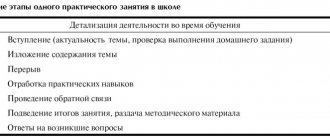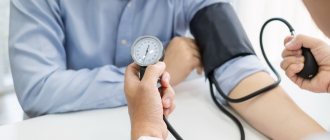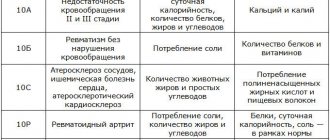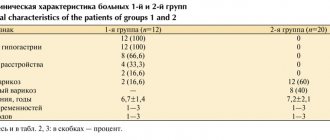How to protect yourself from heart attack and stroke
The development of one of the dangerous vascular pathologies - stroke or heart attack - is increasing every year. Men, hypertensive patients and those who suffer from endocrinopathies are especially at risk. People whose close relatives have suffered from cardiovascular diseases are also at increased risk.
Fortunately, the risks of both stroke and heart attack can be significantly reduced. To do this, you don’t need to perform any complex actions or completely change your usual schedule. We will talk about those measures to prevent stroke and heart attack that will minimize the risk of both vascular (vascular) disasters.
Risk factors for both diseases
Prevention of any pathology is based on the maximum elimination of risk factors. They are:
- Factors that cannot be influenced. These are age, gender (men under 50 get sick more often, then the numbers become equal), genetic predisposition to cardiovascular pathologies.
- Factors that can be modified: prevention of stroke and heart attack is aimed specifically at their elimination. This is smoking (including hookah or vaping), high cholesterol, hypertension, alcohol abuse, physical inactivity, consumption of trans fats and simple carbohydrates in large quantities, excess body weight (especially with an increase in the layer of abdominal fat), diabetes mellitus and others diseases of the endocrine system, hypercoagulable states, increased levels of homocysteine (a special sulfur-containing acid), peripheral vascular diseases, connective tissue pathologies.
Of course, each of the vascular accidents has its own predisposing factors. Thus, necrosis of an area of the heart muscle occurs mainly in those people who have hypertrophied the wall of the left ventricle, sometimes the coronary vessels spasm, and amyloidosis has developed. Risk factors for stroke are predominantly heart rhythm disturbances, hemoglobinopathies, brain tumors, endocarditis or rheumatic heart valve disease. However, both diseases are based on a similar development mechanism. This is a blockage of an artery supplying the heart or brain with a blood clot that either formed on the surface of an atherosclerotic plaque or “flew off” from the heart or veins of the lower extremities.
Since both the mechanism and most of the risk factors are identical, there are many similarities in measures to prevent stroke and heart attack. Let's talk about this.
Non-drug preventive measures
This:
- Nutrition. Clinical studies in the prevention of stroke and heart attack have confirmed the effectiveness of a low-calorie diet, which will be rich in fruits, vegetables and nuts, and will also include the mandatory consumption of fish and garlic. There should be almost no foods rich in animal fats and trans fats in the diet. The amount of table salt also needs to be reduced - to 3-5 g per day.
- Physical activity. It is optimal to calculate your individual daily load so that it lasts at least 30 minutes a day, and the heart rate does not exceed 60% of the calculated maximum frequency.
- Weight loss. The body mass index should not exceed 25–27 kg/m2, otherwise the weight becomes an additional burden on the blood vessels. To reduce it, you need to choose a therapeutic diet. You may also need drugs to prevent stroke and heart attack, which will reduce your appetite.
- Independence from bad habits. Nicotine and ethanol damage all layers of the vascular walls and increase blood viscosity. Giving up these bad habits leads to restoration of the cardiovascular system within three years (maximum changes occur in the first 3–6 months). This reduces the risk of vascular accidents by 60%.
- Correction of psychological state. Based on clinical research data, anti-stress programs, psychotherapy or work with a psychologist for stress, depression, and loss of social support reduces the risk of vascular accidents by 34%, and a second heart attack by 29%. In some cases, drugs from the group of antidepressants were prescribed for psychological prevention of stroke and heart attack.
Medicinal preventive measures
Various drugs are used to prevent the development of cardiovascular accidents. In the last section, we already talked about medications that help reduce appetite and restore emotional balance: they are not required to be used, but only help reduce risk factors. But there are also drugs for the prevention of stroke and heart attack that actually reduce the risks of these diseases. They are recommended by the World Health Organization.
Antihypertensive drugs
There is a close relationship between vascular accidents and blood pressure levels. Thus, an increase in the “lower” pressure figure by only 7 mm Hg. Art. increases the risk of heart attack by 27%, death of a part of the brain by 42%, and also more likely leads to the development of heart failure and kidney pathologies. Therefore, an important step in the prevention of stroke and heart attack is lowering blood pressure.
People who have a low risk of vascular accidents (no bad habits, excess weight, diabetes) need to reduce their blood pressure if it exceeds 140/90 mmHg. Art. For those who have diabetes, chronic kidney disease, or cardiovascular pathologies, numbers should not be allowed above 130/90 mmHg. Art.
For such prevention of stroke and heart attack, drugs can be used from different groups. Basically, these are angiotensin-converting enzyme blockers (ACEIs). Such drugs not only help maintain blood pressure at target values, but also prevent changes in the myocardium that occur with hypertension and coronary artery disease.
In addition to ACE inhibitors, beta blockers can be used. Their task is to reduce the heart's need for oxygen. The drugs slow down the heart rate. Non-selective representatives of this group are not prescribed for bronchial pathologies.
Other antihypertensive drugs for the prevention of stroke and heart attack may include diuretics. They are prescribed mainly when only the “lower” pressure increases. They are effectively combined with ACE inhibitors, reducing the risk of vascular accidents.
Lipid-lowering therapy
Based on the results of multicenter studies, effective prevention of stroke and heart attack requires a mandatory reduction in cholesterol and low-density lipoproteins. For this purpose, drugs from the groups of statins or fibrates are used.
When prescribing lipid-lowering therapy, the performance of the liver, kidneys, and heart is carefully monitored. Taking these drugs continues until the cholesterol level reaches 1.8 mmol/l, if no side effects occur.
Often, statins or fibrates are supplemented with the use of omega-3 fatty acids. These substances are especially effective for secondary prevention - preventing recurrence of a vascular accident.
Antithrombotic therapy
The key role in the development of cardiovascular accidents is played by platelet activation. Therefore, in people at high risk, antiplatelet therapy is a necessary condition for prevention.
The standard of care for such therapy is aspirin, used in low doses (50–100 mg/day). It inhibits the enzyme cyclooxygenase, which blocks the formation of a substance called thromboxane A2 in platelets. In this case, blood platelets do not settle in areas of the vessels where there are atherosclerotic plaques or where there is a low blood flow rate. Consequently, then there will be no substrate that can “come off” and clog one of the arteries - feeding the brain or heart.
One of the representatives of such drugs for the prevention of stroke and heart attack is Thrombo ACC 50 or 100 mg. It is acetylsalicylic acid (ASA). Each tablet containing ASA is film-coated with an enteric coating, and this is not without reason. According to a number of studies, the use of an enteric form reduces the risk of complications from the gastrointestinal tract and improves tolerability of the drug during long-term therapy.1 Acetylsalicylic acid helps reduce the risk of blood clots and directly prevent myocardial infarction and stroke.2
*There are contraindications, please consult a specialist before use
1B. V. Kosarev, S. A. Babanov “Clinical pharmacology of modern antiplatelet agents and their place in the pharmacotherapy of coronary heart disease and associated conditions”, Breast Cancer Cardiology, No. 5, 2013
2R.
M. Gazizov, E. A. Atzel “The use of acetylsalicylic acid for primary and secondary prevention of cardiovascular diseases” Breast Cancer Medical Review, No. 11, 2014 p.827-831 RUS-GPS-THR-NON-12-2018-1415
Types of stroke
Clinically, secondary and primary stroke are distinguished. There are also pathologies that are subarachnoid, hemorrhagic, and ischemic in nature. Ischemic pathology often occurs during a heart attack and is characterized by acute disruption of the conductivity of cerebral vessels, the formation of blood clots and air plugs.
With the hemorrhagic variant of the disease, local, extensive and generalized foci of hemorrhage appear. Sometimes the entire brain zone is affected, which is characterized by a malignant course. Subarachnoid stroke occurs due to traumatic rupture of blood vessels and often causes irreversible tissue damage.
Causes of pathology
A stroke occurs against the background of certain negative factors. Prevention of cerebral stroke is based on eliminating the main causes that influence the occurrence of the pathological condition. Age does not always have an effect on the manifestations of stroke. It can occur both in the elderly and at a young age. But according to statistics, people over 60 years of age still get sick most often.
The process often manifests itself in physical inactivity, excess weight, low physical activity, alcohol and nicotine abuse, a history of cardiovascular diseases, sickle cell anemia, brain injuries, atrial fibrillation, tumor processes, and migraines.
Types of disease prevention
How to avoid a stroke? There are several methods that are graded depending on the nature of the disease. In any case, this is a complex process that includes proper patient care, the use of the basics of exercise therapy, therapeutic massage and therapeutic drugs. There may be a lot of reasons, but the methods of influencing the body should prevent undesirable consequences.
In clinical medicine, the following types of preventive effects are distinguished:
- Primary. It allows you to avoid the onset of the disease before its clinical signs;
- Secondary. A set of therapeutic and physiotherapeutic measures that prevent repeated damage to brain tissue, which can threaten the death of the patient;
- Tertiary. It is developed against the background of secondary measures, when there is already a history of stroke. This is medicinal, psychological, labor rehabilitation, which allows you to return a person to a normal life.
Controlled and uncontrollable risk factors should also be taken into account and differentiated. How to prevent a stroke? It is necessary to exclude uncontrolled hypertension, trying to keep blood pressure normal, stop drinking alcohol and smoking tobacco, and be aware of the presence of embologenic cardiac pathologies, which are detected by ultrasound or ECG of the heart.
We have identified controllable risk factors. Uncontrollable factors include physiological age. It is no secret that after 55 years, the likelihood of a stroke increases by more than two and a half times. This also includes being male and genetic background.








